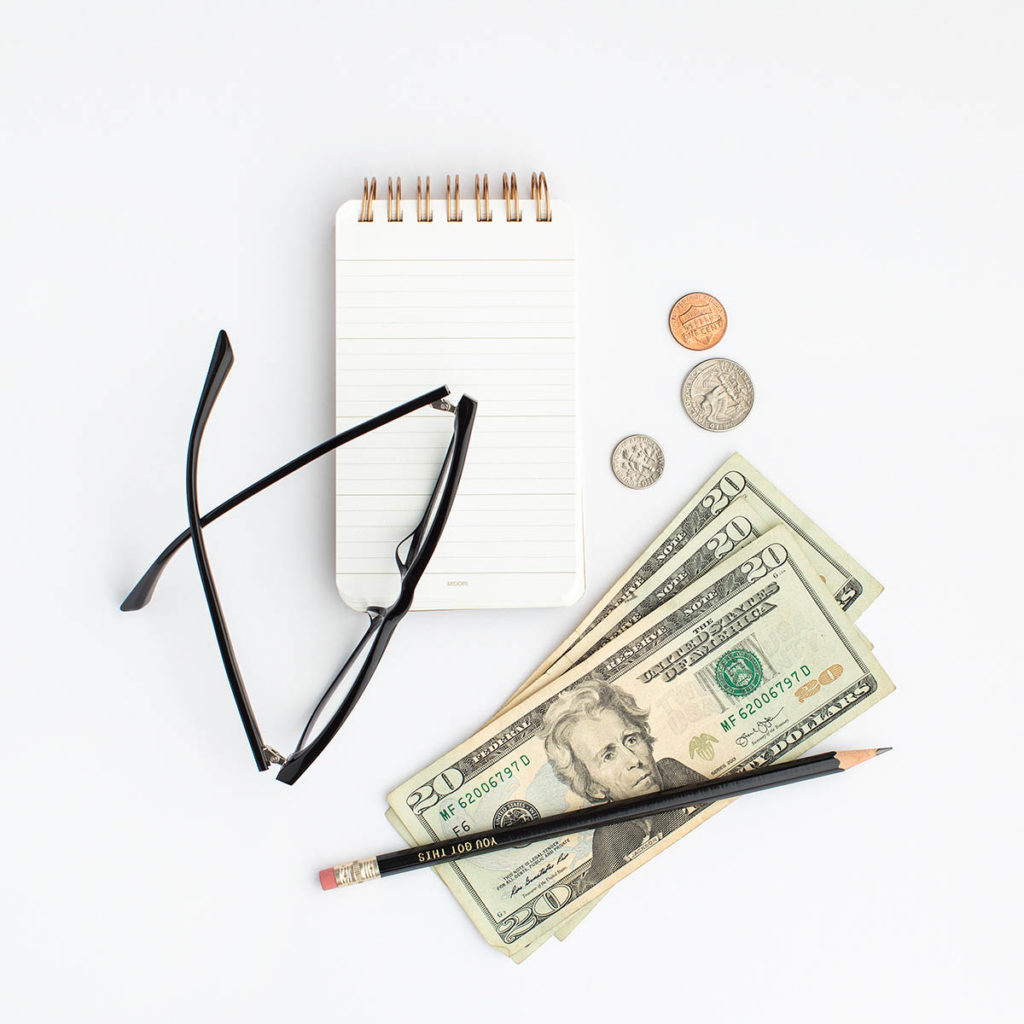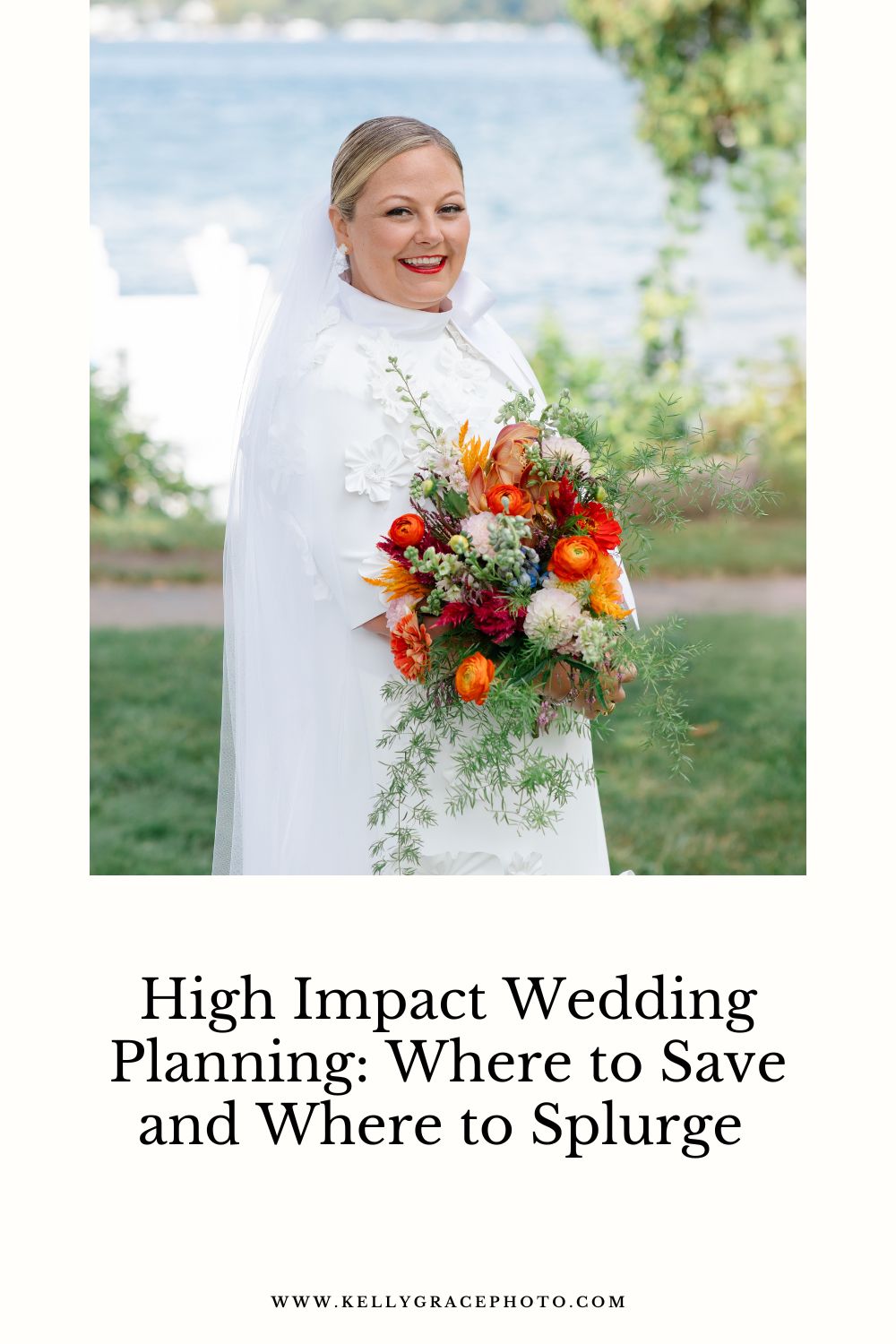It’s safe to say most creative businesses are operating with tighter-than-usual finances coming off the heels of a global pandemic. Many have depleted their savings to keep their business open.
With the economy coming back this is your year to build that savings back up with vigor. Over the years, I have figured out countless hacks that have helped lower my expenses, save money and increase my cash flow.
Let’s look at a few money hacks for your creative business that you can use to be smarter with your business’ finances. They might be small solutions, but they can add up quickly!
Money Hacks For Your Creative Business

Have a business budget: As John Maxwell says, “A budget is telling your money where to go, instead of wondering where it went.”
A budget for your business is basically a plan for how you’ll spend your business dollars month to month. You take a look at your upcoming months, anticipate what is going to happen with your expenses and revenue, and decide how to spend those dollars before the month begins.
Having a plan in place for your business helps you stay in control of your finances and provides you with peace of mind. Not having a good handle on your cash flow or expenses could cause you to spend more than you make, take out unnecessary debt, or cause you to not be able to cover your payments. Putting together a budget each month will help you to stay in control, which in turn will lower your stress levels and keep your confidence up!
Pay with cash: Instead of charging things to credit cards or debit cards, use cash for non-bill spending such as eating out, gas, or starbucks. Spending cash makes the spending more real, and there’s an added advantage of knowing when you’re out of cash, instead of spending more than you budgeted.
Use the envelope system: It’s the same idea as using cash for spending, but in addition you use envelopes to split your spending cash into categories. My non-bills categories are groceries, gas, miscellaneous spending, clothing, and gifts. Once I’ve utilized the cash in these envelopes, I’ve spend my allotment.

Track your spending: When you track your spending you will see your money is going places you had absolutely no idea it was going. Do this for a couple of months so you really get a feel for where your money leaks are happening. For me, it was subscriptions and starbucks runs. Once you find the leaks, you’ll be able to start to put some controls in place.
Save on Advertising: In today’s world of social media and digital marketing, advertising doesn’t have to blow your whole budget. Focus on inbound marketing as much as possible. Instead of throwing all of your money into paid social media advertisements, hone in on your SEO efforts.
Now, more than ever, couples want to form relationships with the businesses they choose. They want to be able to see the humanistic side of creative businesses. Don’t be afraid to show that through consistent engagement, relevant content, and behind-the-scenes looks at what your brand represents. You’ll find that you can quickly cut thousands of dollars from your advertising budget right away.
Don’t be afraid to barter or trade: If you have something you can offer another small business, try bartering to save some money! Write down a list of things you are good at and could benefit something else. Maybe you are good at SEO, building websites, branding sessions, or writing. Utilize those skills to swap with another creative whos skill you may need in your business. It’s a win-win!

Pay for subscriptions yearly: Many companies will give you a discount if you pay for an entire subscription up front rather than making month to month payments. Take advantage of these discounts and save yourself a little cash. Services such as Showit, Pic-Time, Use Session, and Adobe all offer discounted rates. If there is a service that doesn’t offer a discount, ask them if it’s something they would offer! The worst they can say is “no.”
Use the Profit First Method: One of the best things I did for my business was implement Profit First.
In Profit First, you take profit out of the cash deposits before expenses rather than paying yourself with what’s leftover. The system involves transferring predetermined percentage of revenue into various bank accounts to cover profits, taxes, expenses, and owner’s compensation. It’s a great way to save for taxes, operating expenses, and your salary.
Outsource: If there are certain tasks in your job you don’t enjoy doing –– outsource it! By outsourcing items that don’t bring you joy, you’ll have more time to spend on other parts of your business. Create a list of all the tasks you do in your business. Then place a “heart” by the things you enjoy and an “X” by the tasks you don’t enjoy. Take a look at that list and determine a couple of tasks you can outsource.
Revisit your insurance premiums: When was the last time you looked at your insurance premiums? If it’s been a few years, it may be time to get quotes from different companies to see if you can cut costs. You may save money by switching companies or your current company may be willing to price match a better offer to keep your business.
Money Hacks For Your Creative Business

Review your expenses: When you’re trying to stay on a budget for your business, every dollar matters. Undoubtedly, you’ll have ongoing expenses each month. So, from time to time take a look at those expenses and figure out where you can make cuts.
For example, are you getting the best possible price for your Internet service? Does your office really need two different music channel subscriptions? How much money are you investing education?
Slimming things down a bit here and there can save you hundreds – or even thousands of dollars each year. You just have to pay attention to the things that aren’t completely necessary and be willing to make cuts as needed.
Keep a 30-day list: We all know it pays to sleep on a big money decision overnight. But what about smaller purchases that crop up throughout the month? Why not add them to your wish list and wait 30 days? That gives you a chance to work them into next month’s budget. And who knows? After evaluated it, maybe you’ll realize you didn’t actually need that item or better yet, it went on sale during that time!
Unsubscribe from emails: Email marketers are really good at what they do. They know the irresistible temptation of a 24-hour sale or exclusive coupon.
If you just can’t resist shopping when you see a special offer, click the unsubscribe link at the bottom of the email. Do it! You’ll be less tempted to spend, and your inbox will be a lot less cluttered.
Use cash back apps: Nothing beats a good, old-fashioned 30% off coupon when you’re buying something. But did you know there are plenty of cash apps out there to help your savings go even further? Check out Ibotta, Rakuten and Honey (a browser extension).

Starbucks: I get it, life without coffee is not an option! Getting starbucks everyday can come at a heft price. Try ordering a short size (it’s cheaper), bring your own cup (saves you 10 cents on every drink!) or choose a brewed coffee over a latte (you get discounted refills and more caffeine!). If you become a rewards member (which is completely free) you get free refills on brewed coffee, exclusive offers, birthday freebies, and various other rewards.
Buy used electronics and vehicles: The very best way to purchase a new vehicle or electronic is to get it used. New cars lose their value at a much faster rate than used cars do. Depending on the make and model, some cars might hold their value a little better than others. But they all lose their value over time—especially new ones. If you just wait a few years, you could let someone else take on the brunt of those first few years of depreciation and buy a good-as-new car for half the price!
Another thing to note is drivers of new cars often get stuck with higher-than-average premiums. Because new cars are more costly to repair or replace, they also cost more to insure. Even with some of the latest safety technology, insurance companies rarely offer discounts to new-car drivers for having those features.
The same goes for new camera equipment and computers. You will always find a deal on slight used equipment with minimal wear and tear. If you are just starting out or looking to upgrade, don’t forget to look at some of those used items in order to save some money.

Skip the warranty: If you purchase a vehicle, electronics or a home you are most likely offered an extended warranty. While extended warranties might sound like a great safety net if something breaks, they actually aren’t worth the additional cost for a few reasons. The odds of you using them are extremely low, they don’t cover everything that may break, and they make you spend more. Instead of buying a bunch of extended warranties you’ll probably never use create an emergency fund! You’re much better off self-insuring by paying yourself the warranty payments. That way, if your camera does break after the normal warranty, you have the money saved to fix it. If not, it’s your money to keep!
Go Roth with your retirement: Put your retirement dollars in a Roth account rather than a traditional account. Why? When you put your retirement dollars in a roth the taxes are taken out immediately, and will continue to grow tax free. In a traditional account, you’ll have to pay taxes on the amount you withdraw based on your current tax rate at retirement.
Here’s what that means: Let’s say you have $1 million in your nest egg when you retire. That $1 million is yours if it’s invested in a Roth.
If $1 million is in a traditional, you’ll pay taxes on your withdrawals in retirement. If you’re in the 22% tax bracket, that would mean $220,000 of that $1 million is going to taxes. Yikes!
Be content: More often than not, you’ll purchase things for your business you don’t actually need. The newest business course, the latest camera gear, an adorable new backpack, or a new preset pack.. you just have to have it! But, do you really? Are you just purchasing those things because you saw someone else have it?
After purchasing items for your business, you’re excited for a few days and then you are ready to purchase more! It’s truly a never-ending cycle. Instead, be content and grateful for what you do have. When you practice contentment you’ll realize you really don’t need all of those things.
What Money Hacks Do You Utilize?
As a creative business owner, it’s imperative to save money and cut costs in order to build savings and have a positive cash flow. Keep these little hacks in mind as you move forward, and don’t be afraid to get creative when it comes to other ways you can save money without sacrificing the quality, products, or services your business has to offer.
What money hacks do you utilize in your own business or personal life? Tell me below!
Are you needing help with your finances? Check out everything that I offer over on my education page!






add a comment
+ COMMENTS